Wondering what grammar skills to teach to your Kindergarten, first grade, or second grade students?
I’ve got you covered! In this “grammar skills by grade level” post, I’m listing out skills to teach in each grade level, K-2!
Where did this list come from? Well, it reflects the Common Core Standards — but also what I’ve personally seen to be appropriate and helpful for each grade level.
Of course, what you teach your students will ultimately depend on your own curriculum and your own standards — and most importantly, what you see that your kids need. Every class and school is different!
So while I hope that these lists are helpful to you as a starting point, I anticipate that you’ll need to make some adjustments and adaptations.
Let’s dive in!
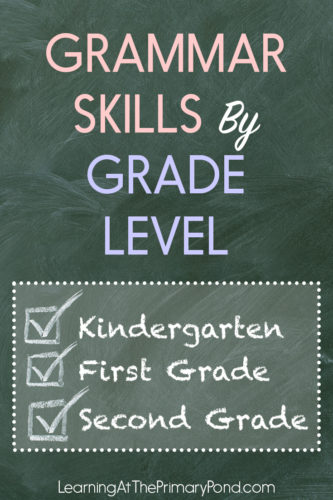
Each list includes grammar, language arts, and writing conventions skills. (Vocabulary skills are not included, nor are concepts that can be included in spelling instruction, like homophones.)
Grammar & Language Skills for Kindergarten
- Use spaces between words
- Write from left-to-right, top-to-bottom
- Identify “sentence” and “word” by name (use those terms)
- Identify the period, question mark, and exclamation point by name
- Consistently use periods to end sentences
- With support, use question marks or exclamation points to end sentences
- Capitalize the first word in a sentence
- Capitalize the pronoun “I”
- Capitalize names of familiar people (i.e., friends’ names)
- Speak in complete sentences
- Write in complete sentences (may need support)
- Understand and use question words (who, what, where, when, why, how) orally
- Use common nouns to name people, places, and things — orally and in writing
- Use describing words to give detail — orally (adjectives, but I don’t require Kinders to know the word “adjective”)
- Use specific action words — orally (verbs, but I don’t require Kinders to know the word “verbs,” though I may use it myself)
- Use simple pronouns correctly — orally and in writing
- Demonstrate understanding of and use common prepositions — orally
- Use plural nouns with -s and -es — orally (should also attempt in writing but may not spell them correctly, especially the -es ending)
- Produce statements, questions, and exclamations with prompting — orally (I don’t require Kinders to identify these sentence types by name)
- Expand simple sentences by adding more details — orally, with prompting
- Discuss differences between present and past tense verbs and use them correctly — orally, should also attempt in writing
Grammar & Language Skills for First Grade
- Use spaces between words
- Write from left-to-right, top-to-bottom
- Identify “sentence” and “word” by name (use those terms)
- Identify the period, question mark, and exclamation point by name
- Consistently use correct ending punctuation marks
- Use commas to write the date
- Use commas to separate words in a list or series
- Capitalize the first word in a sentence
- Capitalize words in the date
- Capitalize names of people
- Form the abbreviations Mr., Ms., and Mrs. — in writing, with support
- Speak in complete sentences
- Identify the subject and predicate of a simple sentence (know terms “subject” and “predicate”)
- Write in complete sentences (use knowledge of subject and predicate)
- Understand and use question words (who, what, where, when, why, how) — orally and in writing
- Use common nouns to name people, places, things, and ideas — orally and in writing
- Correctly identify nouns (using the term “noun”)
- Use proper nouns to name specific people, places, and things — orally (should attempt to use in writing but may not always capitalize correctly yet)
- Use possessive nouns (i.e., “the girl’s book”) — orally (may attempt in writing but correct spelling and punctuation are not yet expected)
- Use pronouns correctly — orally and in writing
- Use personal pronouns (i.e., “me”), possessive pronouns (i.e. “ours”), and indefinite pronouns (i.e., “someone”) correctly — orally and in writing
- Correctly identify action verbs (using the term “verb”)
- Use correct subject-verb agreement in simple sentences — orally and in writing
- Discuss the differences in meaning between the past-tense, present-tense, and future-tense forms of a verb
- Use past-tense, present-tense, and future-tense forms of verbs correctly — orally and in writing
- Discuss and use irregular past-tense verbs — orally and in writing
- Correctly identify adjectives (using the term “adjective”)
- Use adjectives to give detail and describe — orally and in writing
- Use common conjunctions (i.e., “and,” “but”) — orally and in writing
- With support, combine 2 simple sentences to form a complex sentence
- Expand on simple sentences — orally and in writing
- Use “a” and “the” correctly — orally and in writing
- Use “this,” “these,” “that,” and “those” correctly — orally
- Demonstrate understanding of common prepositions
- Use common prepositions correctly — orally and in writing
- Produce statements, questions, exclamations, and commands — orally and in writing (may or may not know names of these sentence types, although I use the terms with them)
- Discuss the meaning of simple contractions — orally
- Discuss how language is used differently in different contexts (i.e., formal and informal English)
Grammar & Language Skills for Second Grade
- Identify the period, question mark, and exclamation point by name
- Consistently use correct ending punctuation marks
- Use commas to write the date
- Use commas to separate words in a list or series
- Use commas in the greeting and closing of a letter
- Capitalize the first word in a sentence
- Capitalize words in the date
- Capitalize names of people
- Capitalize names of products
- Capitalize names of holidays
- Capitalize geographic names
- Form and correctly punctuate the abbreviations Mr., Ms., and Mrs.
- Correctly form simple contractions with an apostrophe
- Correctly form simple possessives with an apostrophe
- Speak in complete sentences
- Identify the subject and predicate of a simple sentence (know terms “subject” and “predicate”)
- Write in complete sentences (use knowledge of subject and predicate)
- Understand and use question words (who, what, where, when, why, how) — orally and in writing
- Use common nouns to name people, places, things, and ideas — orally and in writing
- Use plural nouns correctly — orally and in writing
- Use pronouns correctly — orally and in writing
- Use reflexive pronouns correctly — orally and in writing
- Correctly identify nouns (using the term “noun”)
- Use proper nouns to name specific people, places, and things — orally and in writing
- Use common collective nouns (i.e., “herd,” “group,” or “crowd”) — orally and in writing
- Use possessive nouns (i.e., “the girl’s book”) — orally and in writing
- Use personal pronouns (i.e., “me”), possessive pronouns (i.e., “ours”), and indefinite pronouns (i.e., “someone”) correctly — orally and in writing
- Correctly identify action verbs (using the term “verb”)
- With support, identify “to be” verbs and linking verbs as verbs
- Use past-tense, present-tense, and future-tense forms of verbs correctly — orally and in writing
- Use common irregular past-tense verbs — orally and in writing
- Use correct subject-verb agreement in sentences — orally and in writing
- Discuss the differences in meaning between the past-tense, present-tense, and future-tense forms of a verb
- Correctly identify adjectives (using the term “adjective”)
- Use adjectives to give detail and describe nouns — orally and in writing
- Use the comparison forms of adjectives (-er, -est) — orally and in writing
- Correctly identify adverbs (using the term “adverb”)
- Use adverbs to describe verbs — orally and in writing (may need prompting to use in writing)
- Correctly choose between adjectives and adverbs — orally and in writing
- Identify contractions and explain how to form them (using the term “contraction”)
- Identify possessives and explain how to form them
- Use conjunctions (i.e., “and,” “but”) — orally and in writing
- Expand on simple sentences — orally and in writing
- Combine 2 simple sentences with a conjunction to form a complex sentence — orally and in writing
- With support, combine 2 simple sentences into 1 sentence by eliminating parts and rearranging parts
- Use “this,” “these,” “that,” and “those” correctly — orally
- Use common prepositions correctly — orally and in writing
- Produce statements, questions, exclamations, and commands — orally and in writing (and identify these sentence types)
- Discuss what dialogue is (may attempt to produce it in writing, but correct punctuation is not yet expected)
- Discuss how language is used differently in different contexts (i.e., formal and informal English)
It’s a lot, I know!
You can use my Grammar Alive series for Kindergarten, first grade, or second grade to help you teach all these skills:
Want some more ideas and activities for teaching grammar? Check out the other posts in this series:
- Best Practices for Teaching Grammar in K-2
- How to Integrate Grammar Into Your Writing Instruction
- How to Integrate Grammar Instruction Into Shared Reading or Close Reading
- How to Find Time for Grammar Instruction
- 5 Tips for Helping K-2 Students Actually Apply Their Grammar Learning
- 15 Picture Books For Teaching Grammar and Conventions
- Grammar ALIVE! A 3-Part Approach for Engaging, Relevant Grammar Instruction in K-2
Happy teaching!


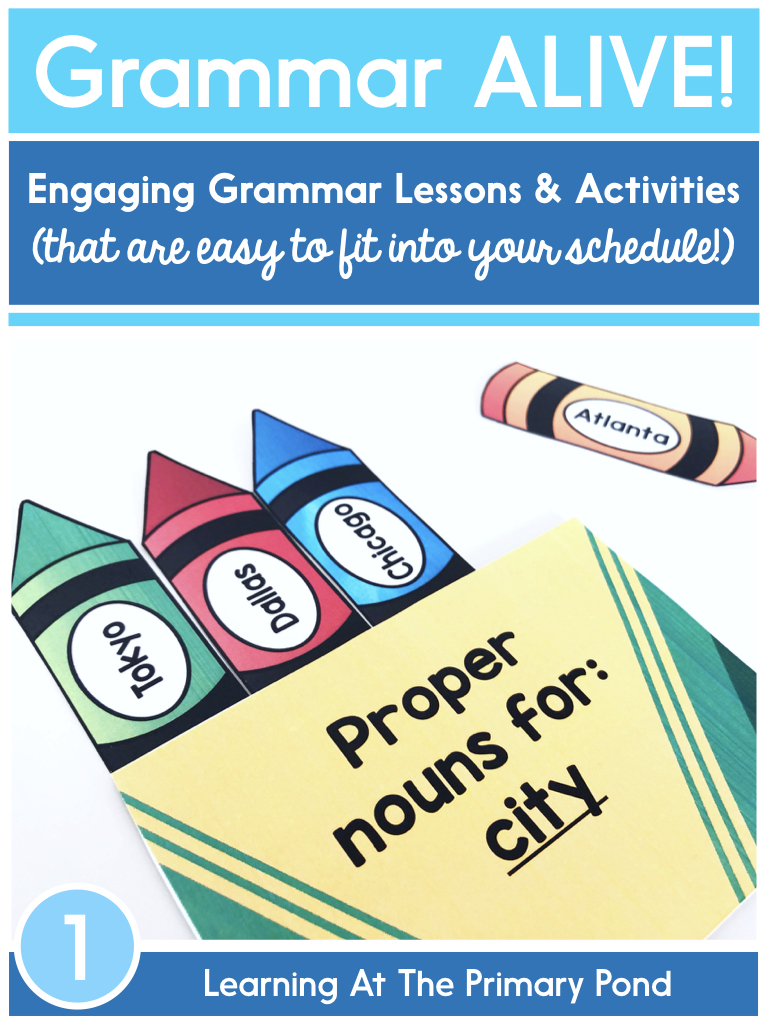

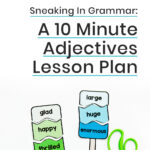
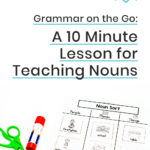
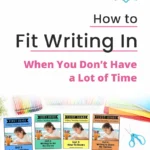
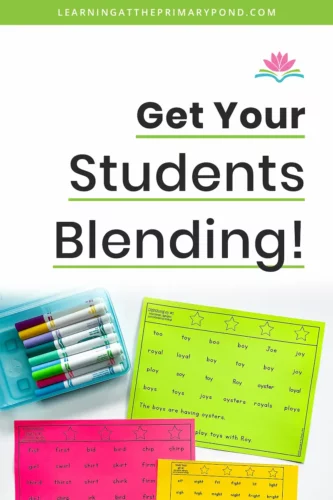








How do you get a baseline to determine what grammar skills a student may be missing?
Hi! I suppose the best way to get a baseline for say a second grade student would be to perform either a verbal or written assessment with the student(s). If you are looking at a child coming in new to your classroom, say mid-year, you could have them fill out previous quizzes or assessments you’ve given prior to their arrival. Grammar skills are often introduced and then reinforced several times before mastery is acquired.
Thank you for sharing this informative article. I hope you share more info on the same topic.
<b><a href=”https://www.classcapades.com/pro-grammar?utm_source=blogs&utm_medium=Blog+posting&utm_campaign=Comments&utm_id=Blog+posting” title=”Grammer for kids”>Grammer program for kids</a></b>
One may presume that using commas in the greeting and closing of a letter in the 2nd grade includes other forms of address, e.g., ‘Hello, Mr. Jones,’ and ‘Thank you, Ms. Smith,’ yes, or is that 3rd grade?
Hey! Great question. In my opinion, I’d say this is at least 3rd grade. However, if you have students who are comfortable with grammar skills in 2nd grade and are using this type of language throughout, you can definitely teach it to them if they’re ready!
This is extremely helpful.
Great to hear!
How do I find grammar alive on TPT? I have searched all over. I have typed the name of the this website, the words Grammar Alive, and Allison. I have used those words in a variety of ways and it is not coming up under school access. I wanted to get the Kindergarten grammar for the year.
Hey Nanci! Here is a link that will take you to all my grammar resources on TpT: https://www.teacherspayteachers.com/Store/Learning-At-The-Primary-Pond-Alison/Search:grammar